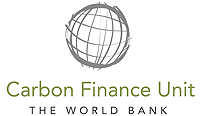Overview
Land degradation has been identified as a major issue for Albania. Highly degraded land has been subject to uncontrolled grazing which prevents the development of a protective vegetation cover. These terrains are eroding quickly, and the landscape looks devastated. It is essential that a vegetative cover is established to halt erosion.
Within the project, reforestation of degraded lands has been undertaken by assisting the natural regeneration of vegetation that would result in improved biomass accumulation on degraded lands, reduced soil degradation, improved water quality, conservation of biodiversity and translates into improvement in the livelihoods of poor rural households.
This project has supported a participatory approach within the community to reach a common agreement on the selection of sites and their protection from grazing, and facilitate implementation of the interventions needed to accompany this change.
Benefits
The project contributed to national sustainable development in the following ways.
- Improved land management in hilly areas which is key to control runoff into the sea and to enhance coastal and marine water quality and ecosystems in the Adriatic, identified as a high priority for conservation measures under the Mediterranean Action Plan.
- Promotion of a broad range of livelihood options for the rural poor, thereby reducing pressure on over-exploited natural resources and providing incentives for communities to manage their forest, pastoral and agricultural resources in a sustainable manner.
- An opportunity to bring critically needed sustainable revenue streams directly to poor rural communities in exchange of public good services, and therefore, a significant impact on the livelihoods.
- Substantial employment benefits during the initial years of the project. Additionally, over 80,000 people have benefited from the project through short- and medium-term employment generated by the reinvestment of the revenues from carbon sales, reduction of maintenance costs on irrigation and drainage infrastructure, reduction of cost of water treatment and flood risk.
- Where alternative pasture or grazing resources were in short supply, grasses germinating within fenced-off areas was available for cutting and collection and served as fodder for winter stall-feeding. Grass cutting also served to protect the young regeneration from fire hazard.
- Significant erosion control benefits which are valued by villagers.
- Additional benefits such as small timber, firewood, nuts (e.g. chestnuts) and fruits (e.g. cherries) and medicinal products.
